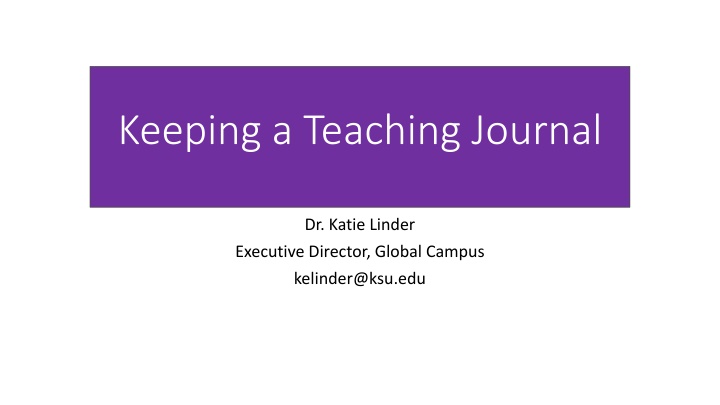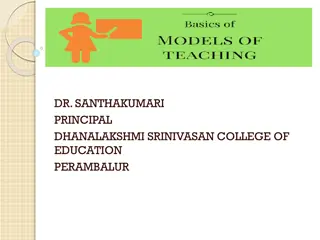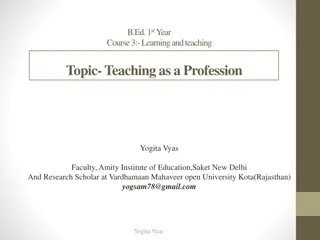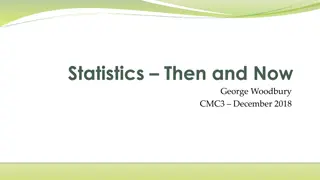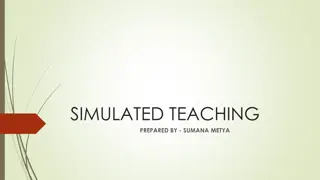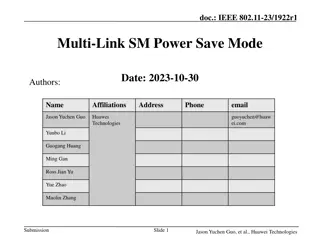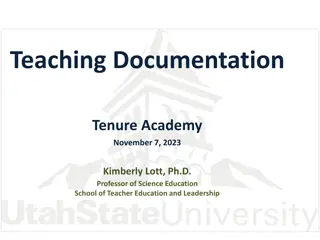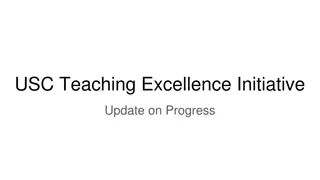Enhancing Teaching Through the Power of Journaling
Explore the concept of a teaching journal, its benefits, and practical tips to get started. Discover how journaling can help educators reflect, improve pedagogical strategies, and track teaching experiences for professional development.
Download Presentation

Please find below an Image/Link to download the presentation.
The content on the website is provided AS IS for your information and personal use only. It may not be sold, licensed, or shared on other websites without obtaining consent from the author.If you encounter any issues during the download, it is possible that the publisher has removed the file from their server.
You are allowed to download the files provided on this website for personal or commercial use, subject to the condition that they are used lawfully. All files are the property of their respective owners.
The content on the website is provided AS IS for your information and personal use only. It may not be sold, licensed, or shared on other websites without obtaining consent from the author.
E N D
Presentation Transcript
Keeping a Teaching Journal Dr. Katie Linder Executive Director, Global Campus kelinder@ksu.edu
Todays Agenda What experience has everyone had with journaling? What is a teaching journal? What are some of the benefits of keeping a teaching journal? How do I get started with a teaching journal? What kinds of topics might I journal about? What are some journaling resources for academics? Close with reviewing current Keep Teaching resources and offer feedback for resources needed in the future.
Whats your experience with journaling?
What is a teaching journal? A teaching journal is: a method for reflecting on pedagogical choices and strategies a technique for decompressing and processing during a difficult teaching period a form of field notes for our teaching practice a way of gathering data for future teaching and learning inquiries (Scholarship of Teaching and Learning) a space to log questions that might lead to future action or course revisions
What are some of the benefits of keeping a teaching journal? We can see patterns that occur over time that might be hard to recognize without regular reflection We can experience a feeling of closure after a class session, week of classes, or term is completed We can consider our teaching in a more formal way that might lead to research or publication on pedagogical topics or data We can keep all of our teaching thoughts, ideas, and observations in one place for easier retrieval when needed for annual reviews or other documentation We can release emotions (both positive and negative) associated with teaching and learning
How do I get started with a teaching journal? Choose a journaling medium (digital or analog) Syllabus journals (i.e. notes take directly on your syllabus document are a great format for a teaching journal this can work great in a Google Doc format where you can add notes and comments throughout the term and then easily share with GTAs or other colleagues) Keep the journal in a place where you are reminded that it exists Schedule time for consistent reflection (could be after each class, weekly, or a couple of times per month) Practice journaling realistically (only a couple sentences is okay!) Consider reviewing your entries periodically to look for patterns
What kinds of topics might I journal about? How things went the first day of class New assignments that you are offering for the first time Any worries or concerns that you have about the upcoming term What you are most excited about teaching in the upcoming term Favorite teaching activity & why What you think will be the hardest material for your students Aspects of your teaching philosophy that you want to prioritize Goals that you have for your professional development as a teacher Best/worst teaching moment & why
Debrief your 5 minutes of journaling What was easy/hard about journaling for 5 minutes? What takeaways do you have from what you wrote? What is a journal prompt that you might start with next time?
